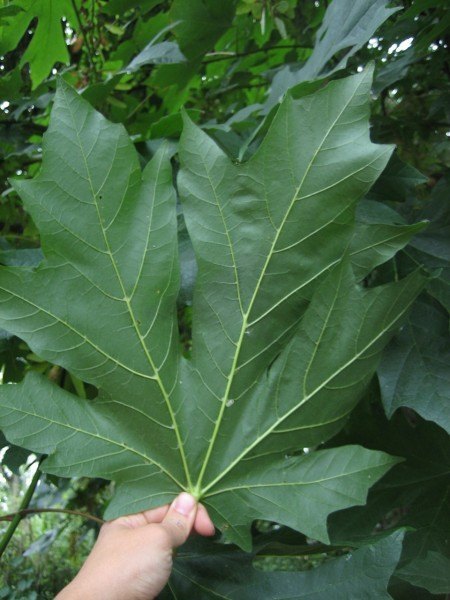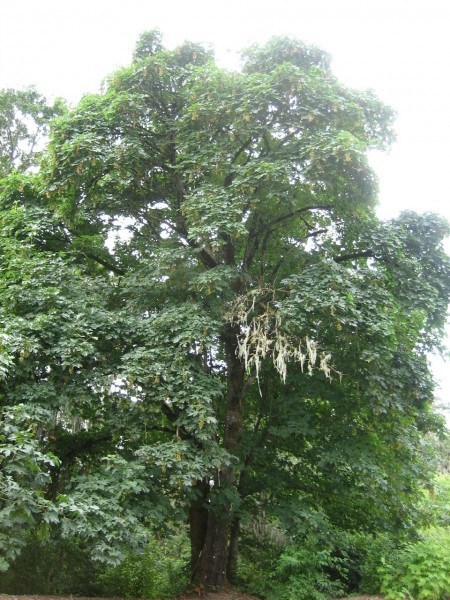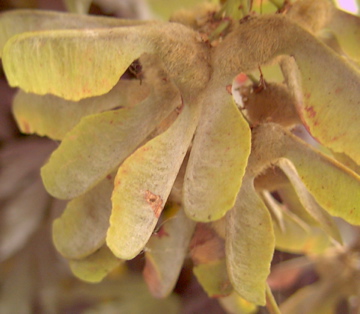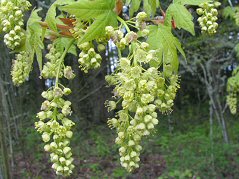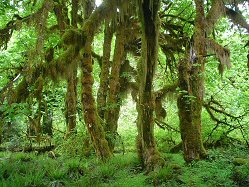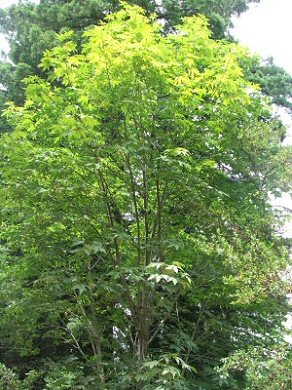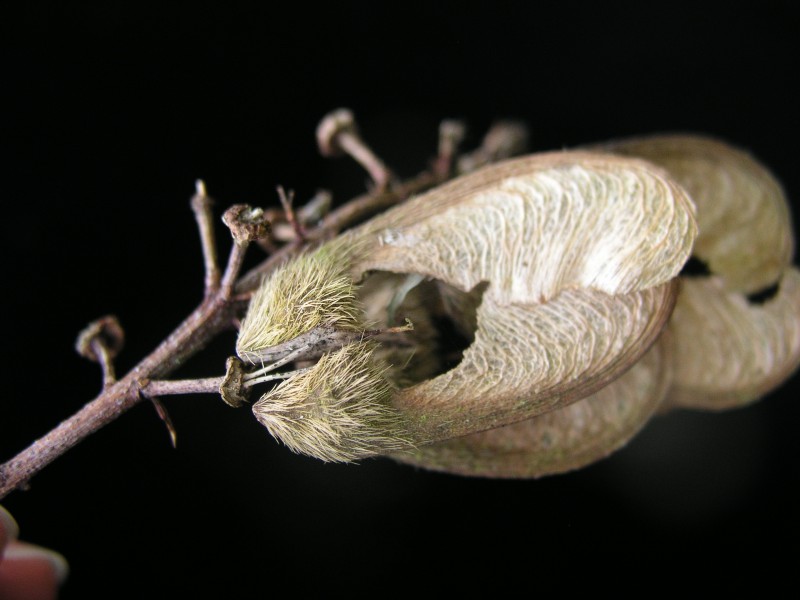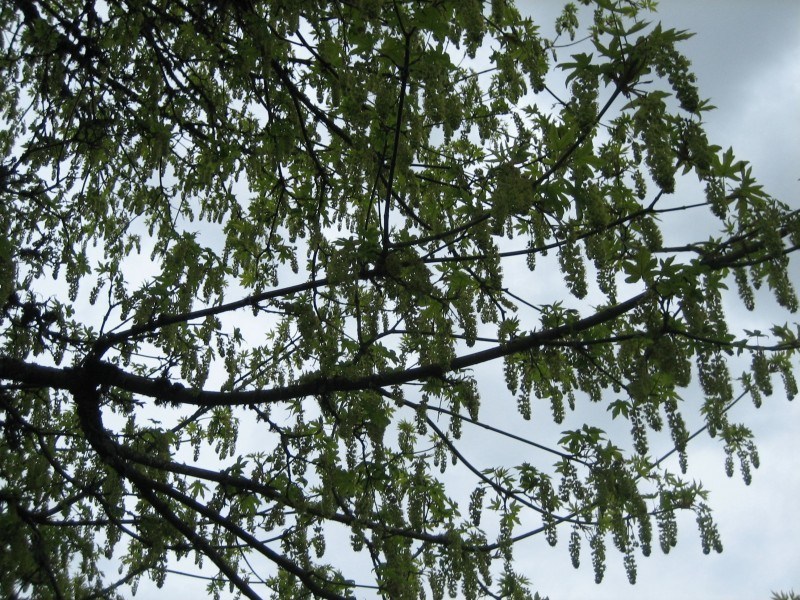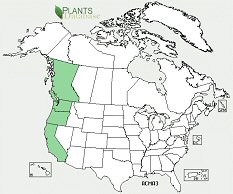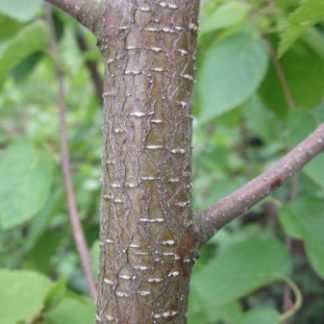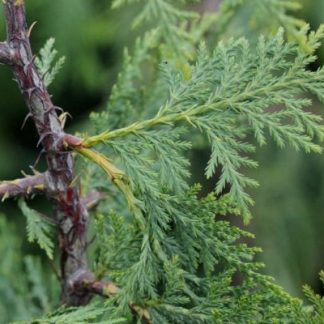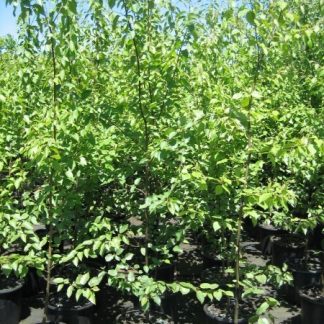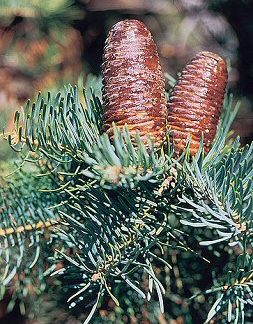Acer macrophyllum
bigleaf maple
Habit: long-lived medium to large sized tree that rapidly grows 50-75 ft (15-22 m), occasionally reaching heights of 100 ft (30 m). Bigleaf maple has a broad, rounded crown with lateral branches that soar upward from a massive trunk. The bark is gray to reddish-brown and furrowed. With the largest leaves of all maples they have five lobes reaching as much as 15 in (38 cm) in diameter. The flowers, small, greenish-yellow, and fragrant, are produced in drooping clusters (racemes) appearing in early spring before or with the leaves. The seeds are winged samaras and are covered with very small, dense hairs that can be painful if touched by a naked hand. Fall color is yellow, orange or copper.
Ecology: native from British Columbia to Southern California, from sea level to 5,500 ft (1,650 m), mostly west of the Cascades, and is usually found growing lower than 4900 ft (1500 m) in elevation. Because the bark of this tree retains moisture, its trunk and large branches are often covered with mosses, liverworts, and ferns.
Growing Conditions: full sun to part shade and well drained fairly moist soil. It can grow over a wide range of temperature and moisture conditions, from the cool, moist, marine climate of coastal British Columbia to the warm, dry, growing seasons of Southern California.
The leaf litter, high in nutrients, enriches the soil where they grow. The shallow, wide spreading root system, well suited to saturated soils, makes it extremely flood tolerant and a great tree for erosion control. It is an ecologically important plant as it is host to a wide variety of mammals, birds, and epiphytic plants and fungi.
Specs
Deciduous Tree
40-100 ft (12-30m)
20-60 ft (6-18 m)
7-10

